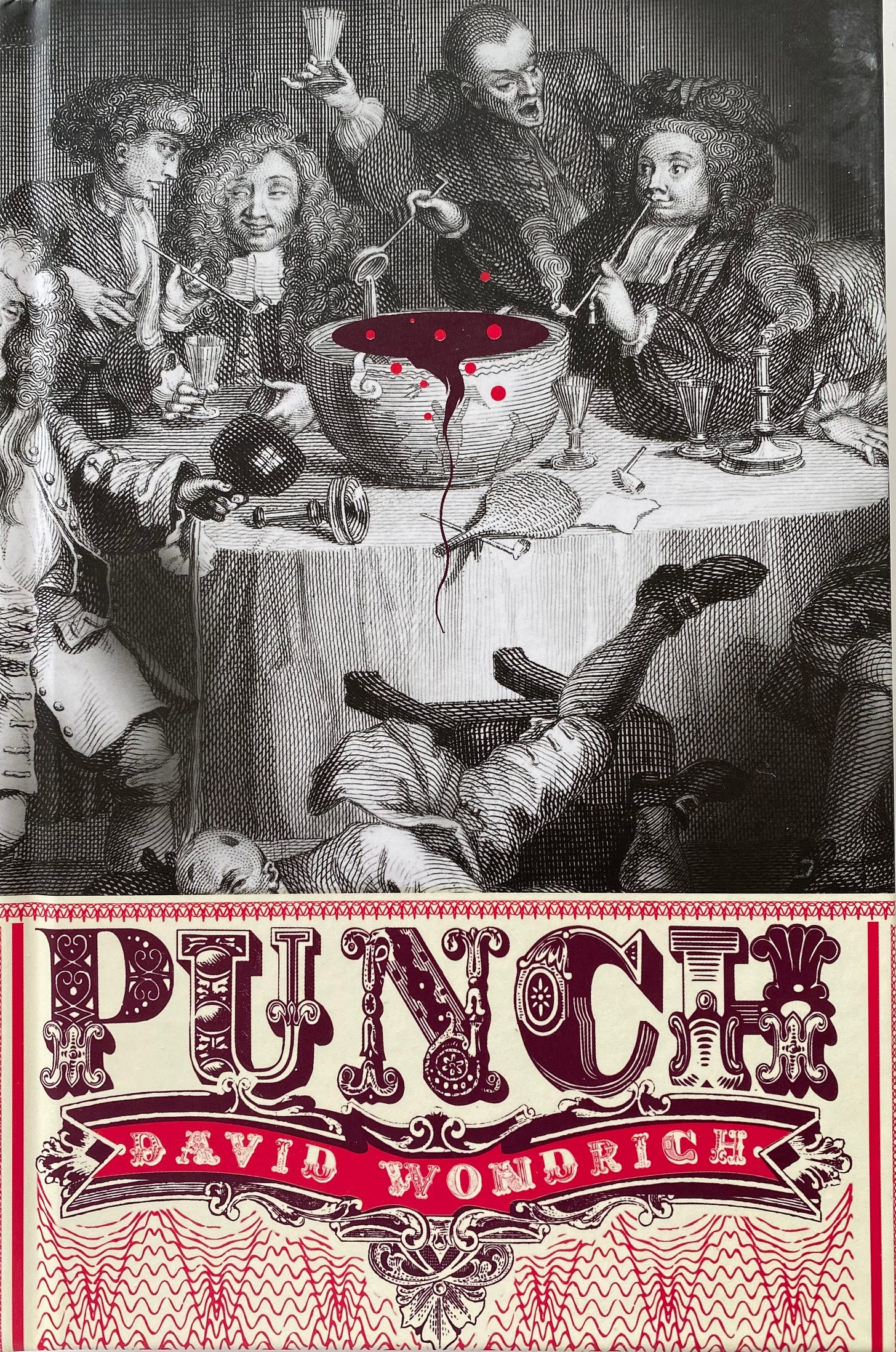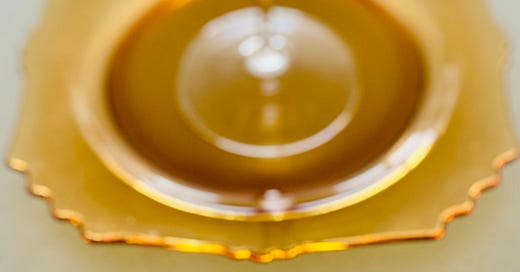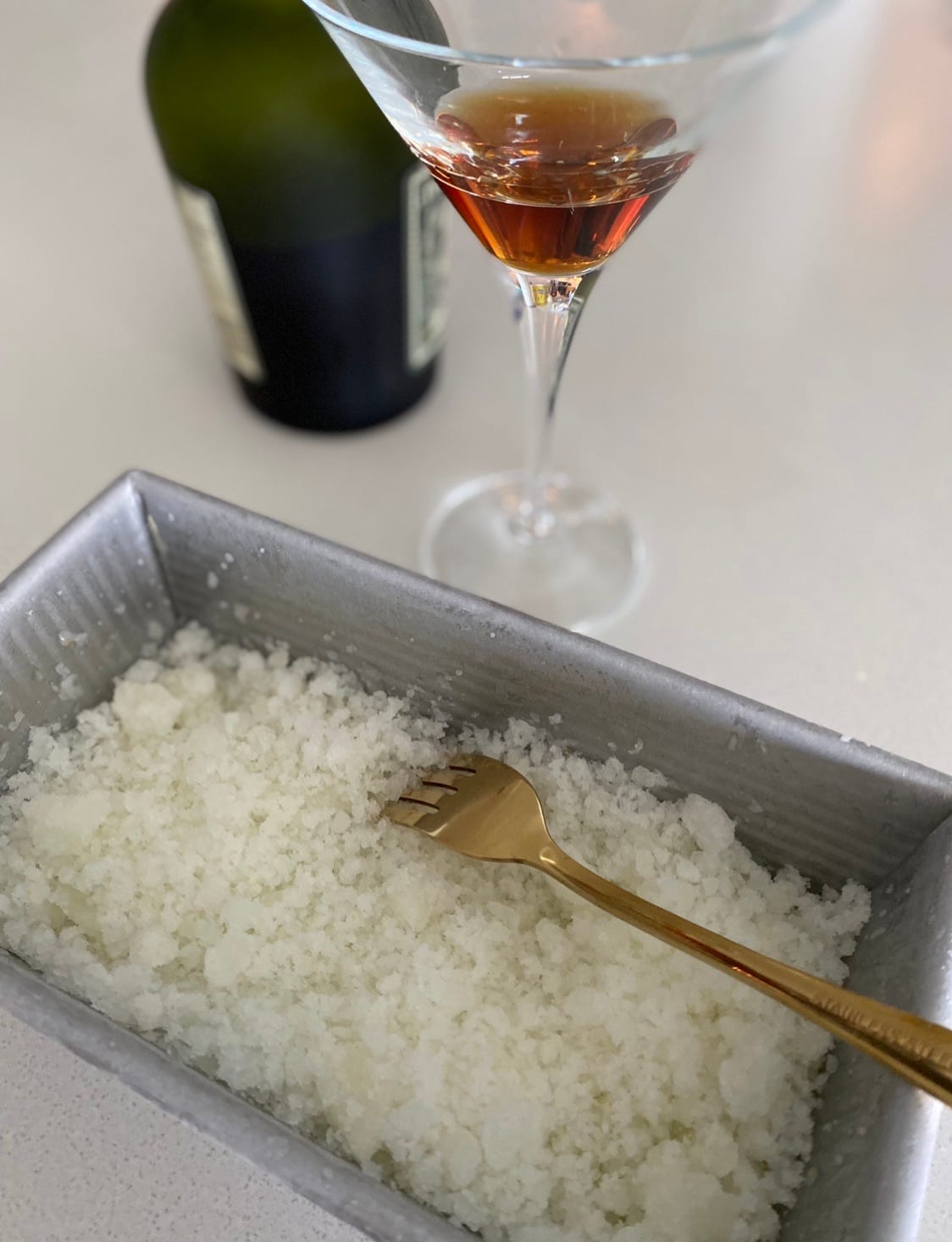A warm welcome to the many new subscribers who have joined over the past week. As always, thank you to all subscribers.
Glad you’re here.
When I asked a few friends who know things whether they’d ever heard of Punch Romaine, their answer was “no”.
This made me feel better about myself because the only Romaine I ever knew was part of a Caesar Salad.
That all changed after I got my hands on the 1893 Chicago World’s Fair Autograph Cookery Book, Favorite Dishes, put out by the Board of Lady Managers of the Fair. Yes, they were called ‘Lady Managers’ and they shared recipes and signed their names to the book which was sold as a keepsake.
Punch Romaine was the recipe contributed by Bertha Honoré Palmer, aka Mrs. Potter Palmer, President of the Board. And as I shared recently, she is the subject of the book I’m writing. Here is the link to that post if you’d like to take a peek.

It turns out that Punch Romaine or Punch à la Romaine is a boozy palate cleanser served at formal dinners of up to ten courses. Per Bertha, it makes its appearance between entrées and roast. All courses were enjoyed by the ladies who were no doubt wearing corsets.
I love that Mrs. Palmer chose this concoction. It was well known that she was sympathetic to the Temperance Movement, and here she is serving up a Rum and Sherry Punch.
She’s sometimes a whirlwind of contradictions, but she is never dull.
A link to history
When I began to research Punch Romaine, the very first thing that appeared in all searches was its place in the tragic history of April 14, 1912.
It was served as the sixth course at the final first class dinner on Titanic.
Though Escoffier is often credited with its creation in 1906, Punch Romaine is obviously found earlier as Bertha’s 1893 recipe shows, and earlier still.
Who invented Punch?
PUNCH, The Delights (and Dangers) of the Flowing Bowl by legendary cocktail authority David Wondrich is a great book —and not just because of the history and recipes — it’s a thoroughly entertaining read. He does, after all, have a doctorate in comparative literature and his writing is so much fun.

On the origin of Punch, Dr. Wondrich has this to say:
Open just about any volume written in English between the late 1600s and the mid 1800s that deals with the details of day-to-day life and odds are sooner or later somebody’s going to brew up a bowl of the stuff— Behn, Defoe, Addison and Steele, Swift, Pope, Fielding, Richardson, Smollett, Sheridan, Boswell, Burney, Edgeworth, Austen, Coleridge, Byron, Thackeray, Dickens, world without end.
A few pages later, Wondrich goes on to say that this mixed drink made with distilled spirits makes its first appearance in writing in England:
Whoever might have invented it, it was Englishmen, or at least Britons, who fostered the formula, spread it to their neighbors, took it all around the world.
Enter Punch Romaine
There’s a chapter on Punch Romaine in Dr. Wondrich’s book and it explains it all. The French added Champagne to Punch (many recipes, including Bertha’s do not use Champagne) and the Italian ‘limonadiers’ in Paris were making ‘lemon water ices’ there since the 17th Century. Wondrich calls this “a truly inspired mashup” and goes on to say:
…the limonadiers had learned to lighten and smooth out the texture of their ices with beaten in meringue, and the addition of alcohol did nothing to harm the process.
The Parisians, anyway, must have believed one of the Italians was responsible for this new hybrid, for they named it Punch à la Romaine—Roman Punch.
A Tipsy Temperance Punch In honor of Bertha Palmer
You can leave the rum out of this recipe and it’s still delicious. I tried some of the granita with just the meringue folded in the way the limonadiers used to make it and it’s terrific.
Let me say right out of the gate: I was skeptical at first. But Punch Romaine won my heart. It’s really good.
I get a kick out of the way old recipes are written. They often don’t include things like yield.
I’ve made a simplified version of Bertha’s Punch from a lemon granita with orange zest (I substituted orange zest for lemon zest in the recipe attached and added 2 Tbsp. of orange juice to keep it more faithful to Bertha’s ingredients) topped with Italian meringue (I halved the recipe) and a shot of dark rum at the base of the glass. I used a Martini glass. Also: Italian meringue is great because you are adding hot sugar syrup which stabilizes it and also lessens the worry about raw egg whites.
In the photo at the top of the newsletter, I mixed all of the ingredients together to make it the way Bertha did and the way it appears to be most commonly made today. The meringue does rise to the top, but you can still drink it.
In the version below, I mounded the meringue on top and it’s easier eaten with a spoon. You get a hit of each flavor as you go, which I really like . The Granita soaks up the rum and starts melting it, but there are still icy bits, and the meringue is a sweet cloud on top.
Here are the recipes I tweaked:
Granita recipe from Caroline’s Cooking: HERE
Italian Meringue from Serious Eats: HERE
Coming Up
Are you curious to know more about the Board of Lady Managers? Next week, paid subscribers will find out what I learned about Gilded Age feminism from my visit to the beautiful Ryerson and Burnham Libraries at the Art Institute of Chicago; here I am (above) with my book coach, author Leigh Stein. Leigh is always pushing me to answer the question “What makes Bertha’s story relevant today?” Next Friday, I’ll try to answer that!
Thanks for being here and have a great weekend.
Jolene
Sources:
Wondrich, David. PUNCH. New York, Penguin Group, 2010.
Ross, Ishbel. Silhouette in Diamonds, The Life of Mrs. Potter Palmer. New York, Harper & Brothers, Publishers, 1960.










I came to this essay via Emily Nunn’s thread on the new non-Twitter “Substack Notes”-- and I’m very happy to get a look at what you’re up to, Jolene! It feels especially Kismet-ish as I just read Edith Wharton’s THE AGE OF INNOCENCE, in which Roman Punch figures: “But a big dinner, with a hired chef and two borrowed footmen, with Roman punch, roses from Henderson's, and menus on gilt-edged cards, was a different affair, and not to be lightly undertaken. As Mrs. Archer remarked, the Roman punch made all the difference; not in itself but by its manifold implications--since it signified either canvas-backs or terrapin, two soups, a hot and a cold sweet, full decolletage with short sleeves, and guests of a proportionate importance.”
Roman Punch on the menu means you’re getting the whole shebang!
The whole punch topic is fascinating, and your look at the Roman/Romaine angle is really interesting and FUN.
I love everything about this.